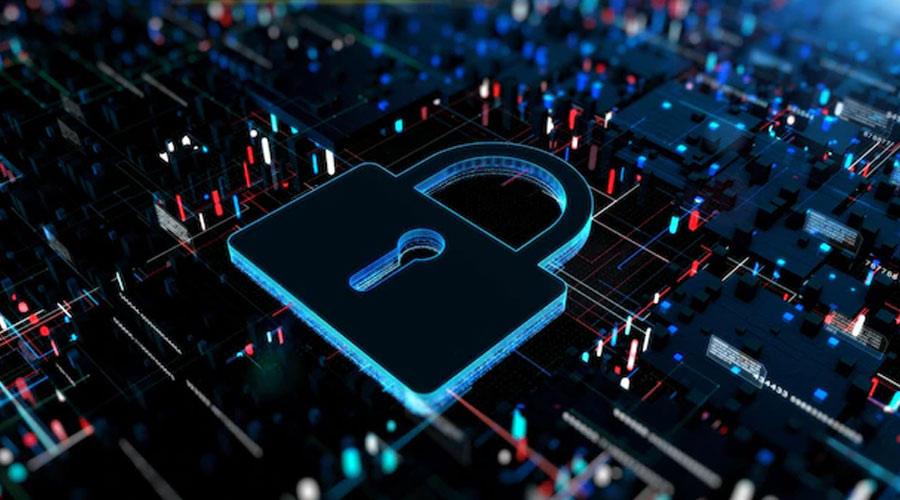In this digital age, it’s more important than ever to stay updated on the latest technology and security solutions to protect your data. Unfortunately, there are a myriad of ways for cybercriminals to exploit inadequacies in cyber defense protection, giving them access to our networks and making us vulnerable – both personally and professionally. That’s why understanding the basics of cyber defense is so crucial!

What is Cybersecurity?
Cybersecurity is the practice of protecting networks, computers, programs, and data from digital attacks. It focuses on detecting, preventing, and responding to threats in cyberspace, whether it be malicious actors or accidental incidents. In today’s world, where technology is pervasive, and digital threats are becoming increasingly sophisticated, cyber defense is not just a necessity but a critical component of any organization’s survival strategy.
Cyberattacks can cause serious damage to an organization’s reputation and bottom line by compromising sensitive data or disrupting key systems. Cybercriminals attempt to gain access to the valuable information stored on computers and networks in order to steal money or confidential information or simply disrupt operations. Cybersecurity efforts are designed to detect vulnerabilities in computer systems that an intruder can exploit before they can do any harm. Furthermore, cybersecurity measures also help protect organizations from insider threats such as fraud or embezzlement.
The importance of effective cybersecurity protocols has grown exponentially due to our increased reliance on digital tools for communication and collaboration. Cyber threats are now commonplace, ranging from large-scale organized crime syndicates targeting major corporations through ransomware demands to small-scale hackers stealing passwords and other personal data from unsuspecting victims via phishing emails or malicious software infections.
As such, organizations must take steps to ensure their systems remain safe and secure against these sophisticated malicious actors. This includes implementing strong security protocols, including encryption technology, identity management solutions, user authentication methods, and regularly updated virus protection software.
Various ways cybercriminals can exploit inadequacies in cyber defense protection
Cyberattacks come in various forms and can exploit numerous weaknesses in cyber defense protection. These include:
- Phishing – This involves sending fake emails or malicious links to users with the aim of stealing personal data, such as usernames and passwords. On clicking these links or opening suspicious attachments, users can unwittingly provide criminals access to their systems.
- Malware – Malicious software, including viruses and ransomware, is designed to infect computers with the intent of damaging or stealing data. They can be transmitted through downloads, installations, email attachments, or even via infected websites.
- Social engineering – Cybercriminals employ psychological manipulation techniques in order to gain confidential information from unsuspecting victims. This might include impersonating a company’s customer service representative or sending fake messages as part of a scam.
- SQL injection – This is where malicious code is injected into web applications in order to access databases containing sensitive information.
- Zero-day exploits – These are vulnerabilities within a system or application that hackers can use to their advantage, often without the knowledge of the user.
How to maximize safety from potential threats
Organizations can protect their data online by implementing several strategies. These include:
- Encryption – Encrypting data is an effective way to ensure that it remains secure and confidential, even if an intruder does gain access to the system. This means converting plain text into code through algorithms or ciphers. Even if the hacker managed to steal the encrypted data, they would not be able to read its contents without the encryption key.
- Two-factor authentication – This adds an additional layer of security by requiring two pieces of evidence before allowing access to a user’s account. For example, this could involve entering a password as well as confirming identity via a one-time code sent to your mobile phone or other devices.
- Password managers – These tools provide users with secure and encrypted passwords for each of their online accounts, reducing the risk of hackers obtaining access to sensitive data.
- Firewalls – Firewalls act as a barrier between a computer system and the internet, monitoring incoming traffic for any malicious activity or suspicious behavior. They can also be used to block certain IP addresses or websites that are known to be associated with cyber criminals.
- Secure networks – Organizations should ensure their Wi-Fi network is password protected and regularly updated to help protect it from external threats. It’s also important to use a Virtual Private Network (VPN) when connecting to public networks, such as those found in hotels or airports, as hackers often target these.
Organizations in various industries are at risk of cyber security threats, but some sectors are particularly vulnerable. Industries that handle large amounts of highly sensitive data and financial transactions, such as banks or healthcare providers, must take proactive measures to protect against potential attacks. Other high-risk industries include e-commerce companies, casino online, the media industry, and government agencies.
By taking the appropriate steps to reduce potential cyber security risks, organizations can protect their data and customers from malicious activity.
Comments are closed.